Module 8. Regular Expressions презентация
Содержание
- 2. Agenda What is "Regular Expression"? Creating and running regular expressions in
- 3. What is "Regular Expression"?
- 4. Concept of Regular Expressions Regular Expression (Regexp or Regex) is a
- 5. Understanding basics Rexes string looks like "cent(er|re)" Each character in
- 6. Creating and running regular expressions in JavaScript
- 7. Create RegExp object JavaScript has special object RexExp There are
- 8. RegExp flags Regular expressions have four optional flags that allow for
- 9. RegExp method test() To check if RegExp matches the string we
- 10. String method search() To find index in a string which corresponds
- 11. String method match() To extract all matches of regular expression from
- 12. Using Regexes with HTML Forms HTML5 supports special attribute pattern for
- 13. Constructing Regular Expressions Exact and character set match, basic special characters
- 14. Exact match and anchors Checking for EXACT match of some pattern
- 15. Character set match Checking for ONE OR MORE symbols at ANY
- 16. Negated character set Using caret symbol "^" as first character set
- 17. Special character: \ A backslash that precedes a non-special character indicates
- 18. Symbol ranges How to specify symbol ranges? var re = /[a-z]/;
- 19. Pattern . (The decimal point) matches any single character except the
- 20. Constructing Regular Expressions Part II: Quantifiers, controlling greedy and non-greedy capturing,
- 21. Quantifiers and greedy capturing Quantifiers show how many times preceding symbol
- 22. Quantifier * Matches the preceding character 0 or more times. Equivalent
- 23. Quantifier+ Matches the preceding character 1 or more times. Equivalent to
- 24. Quantifier ? and switching to non-greedy Matches the preceding character 0
- 25. Capturing groups and logical operators Round brackets "(",")" used to define
- 26. Useful links
- 27. RegEx101: http://regex101.com Regular Expressions on Mozilla Developer Network: https://developer.mozilla.org/en-US/docs/Web/JavaScript/Guide/Regular_Expressions RexEgg: http://www.rexegg.com/
- 28. Thank you!
- 29. Скачать презентацию
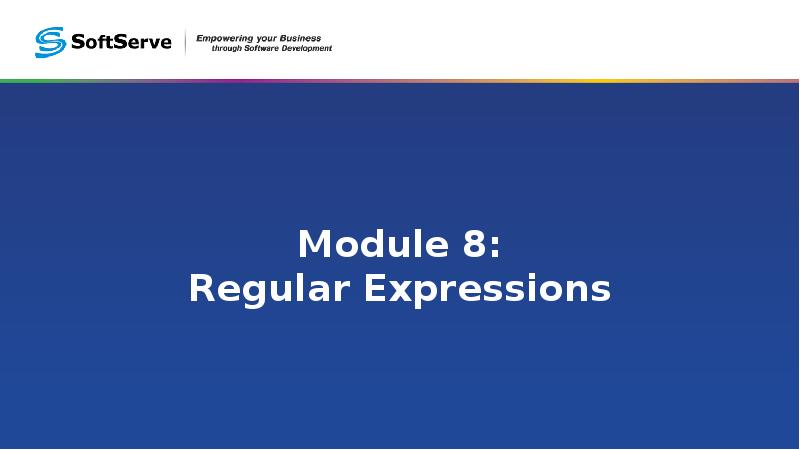




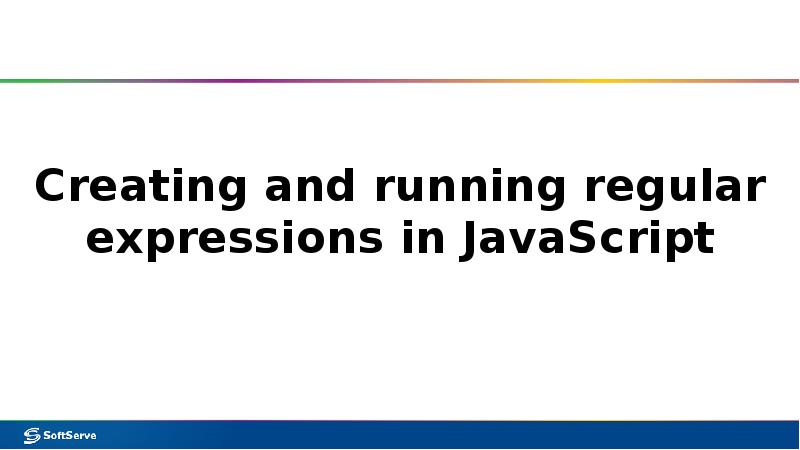

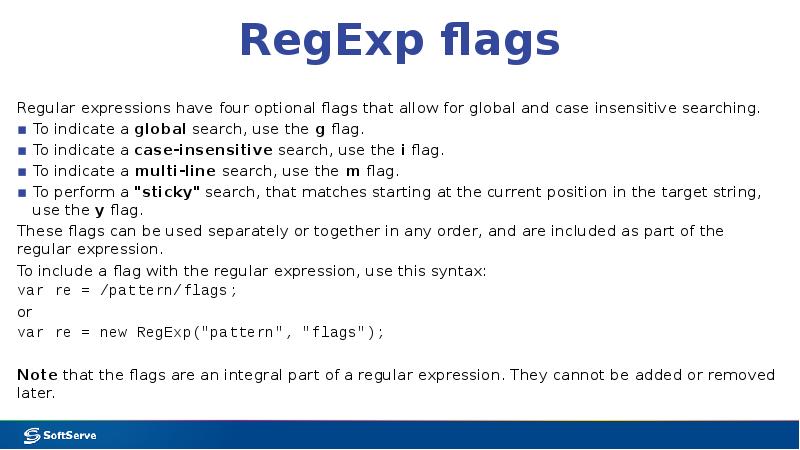

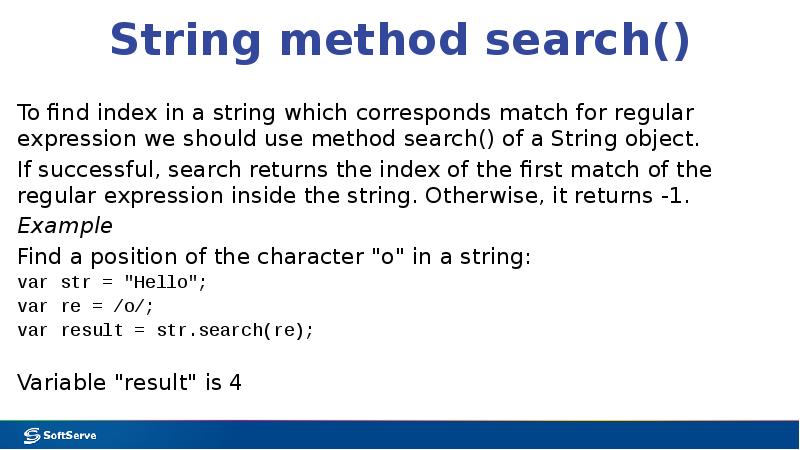
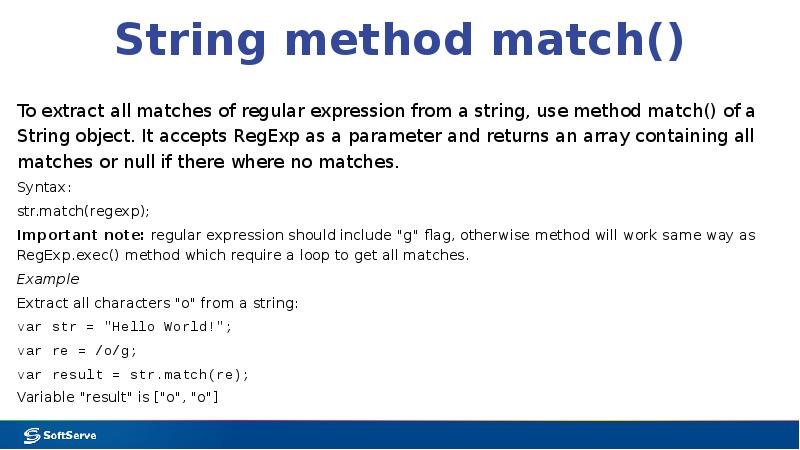
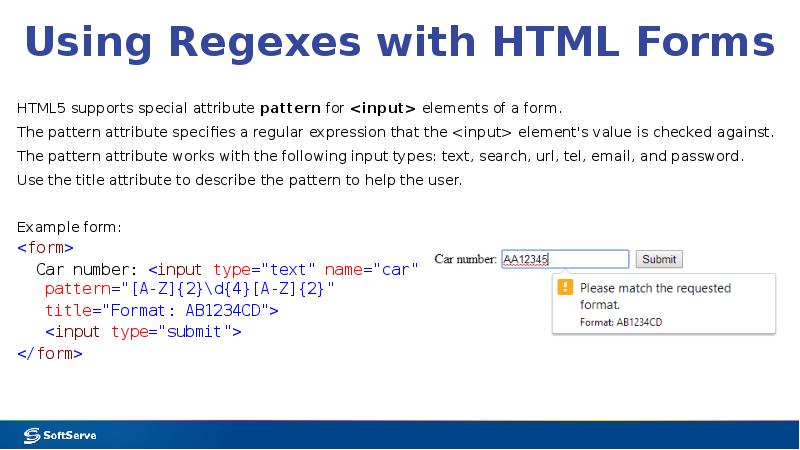

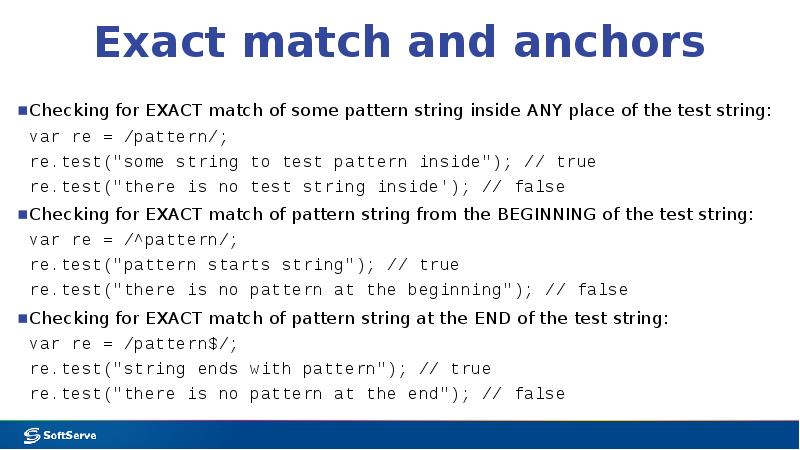
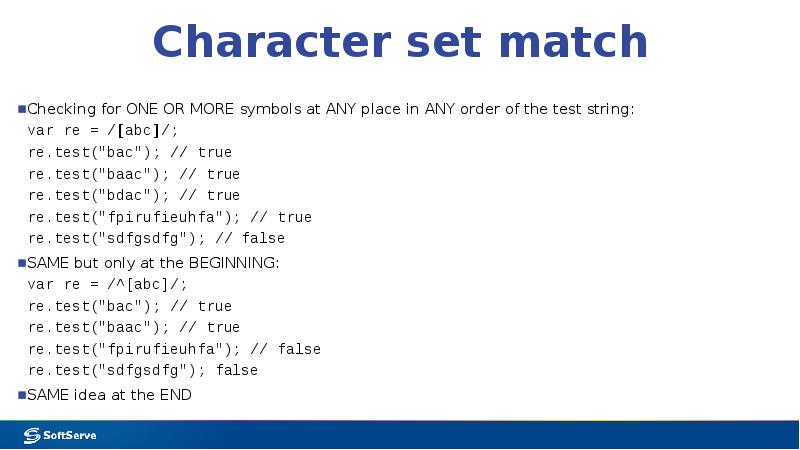
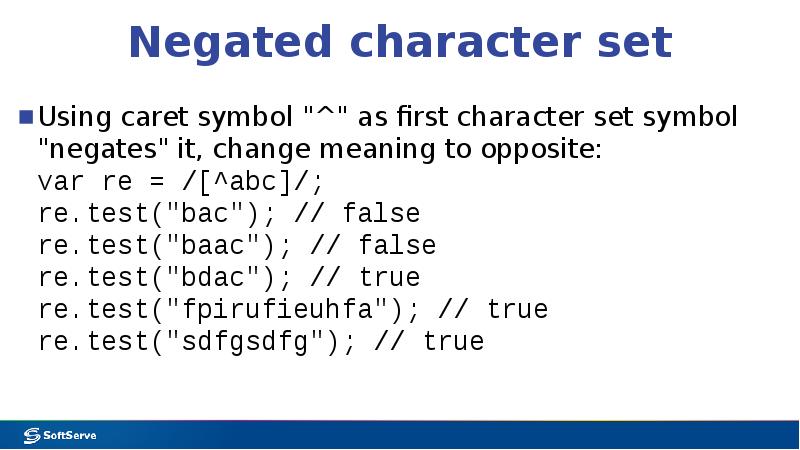
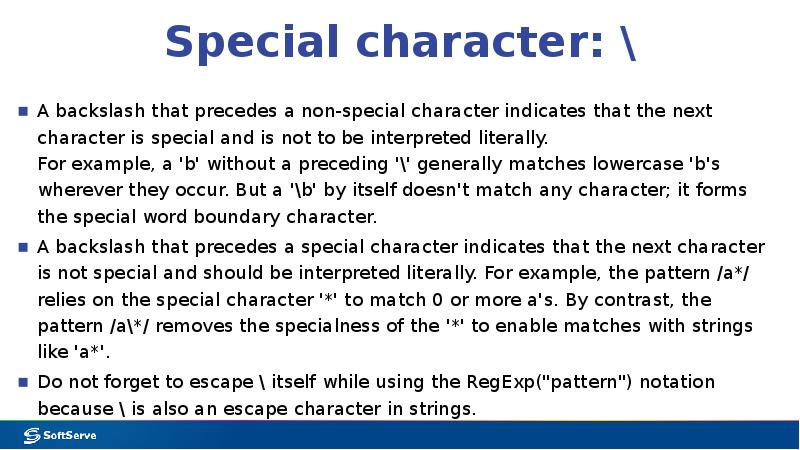
![Symbol ranges
How to specify symbol ranges? var re = /[a-z]/; Symbol ranges
How to specify symbol ranges? var re = /[a-z]/;](/documents_3/c22995da4c5462634b8702867217f8f4/img17.jpg)

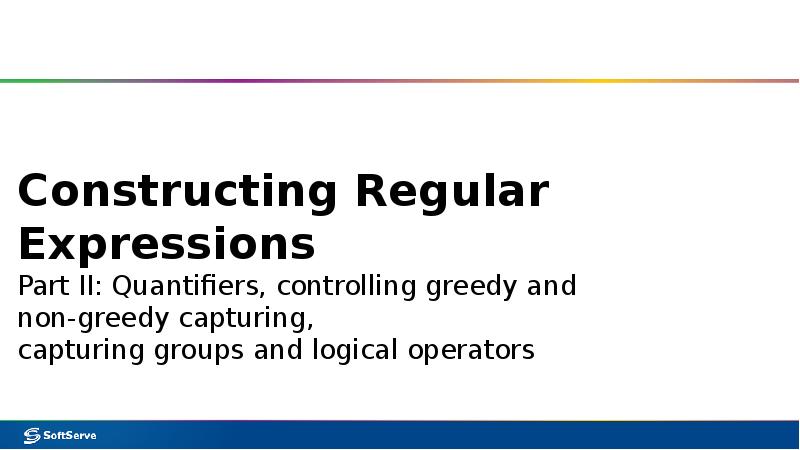
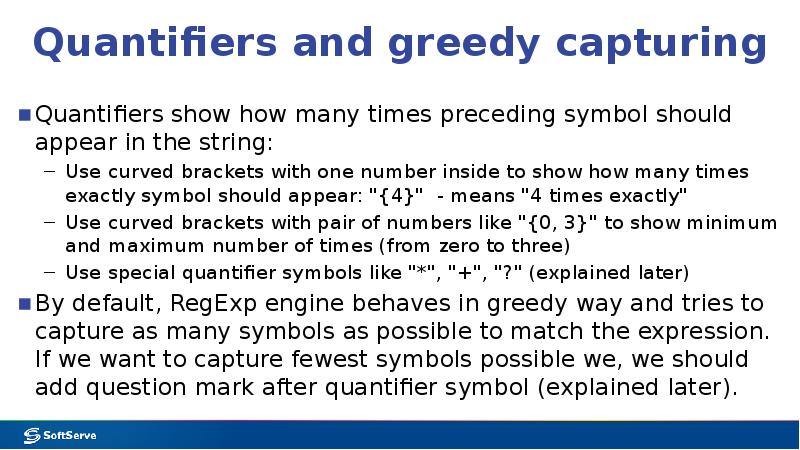
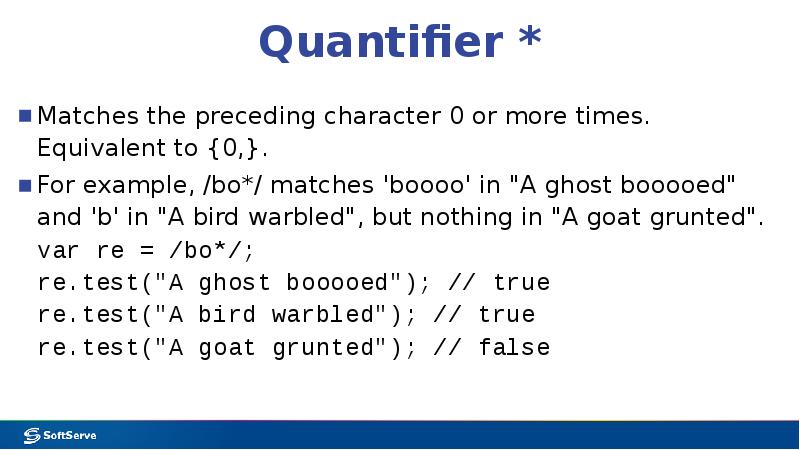
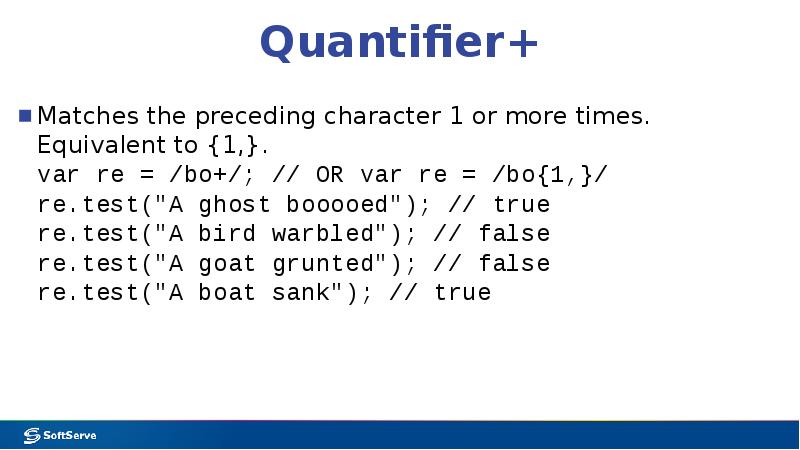
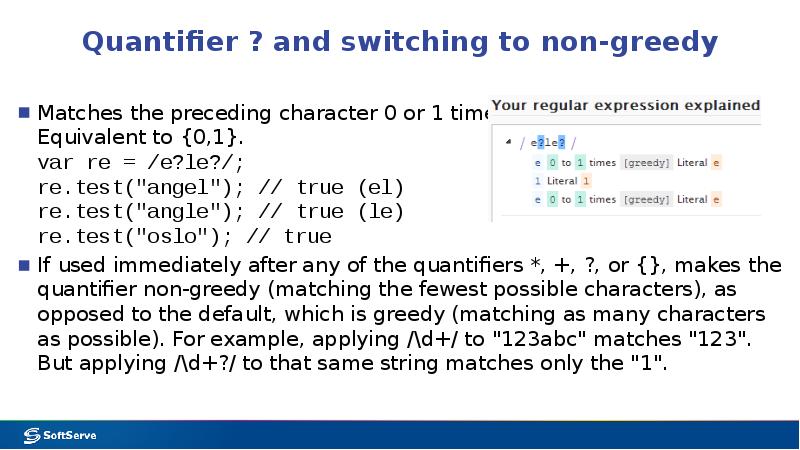
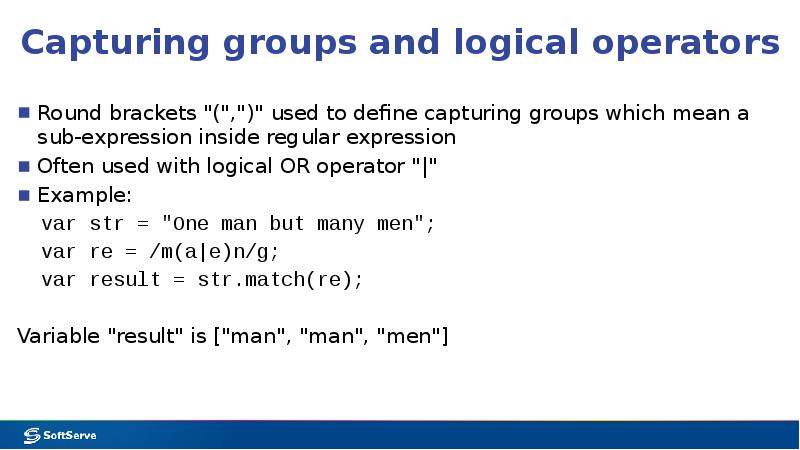
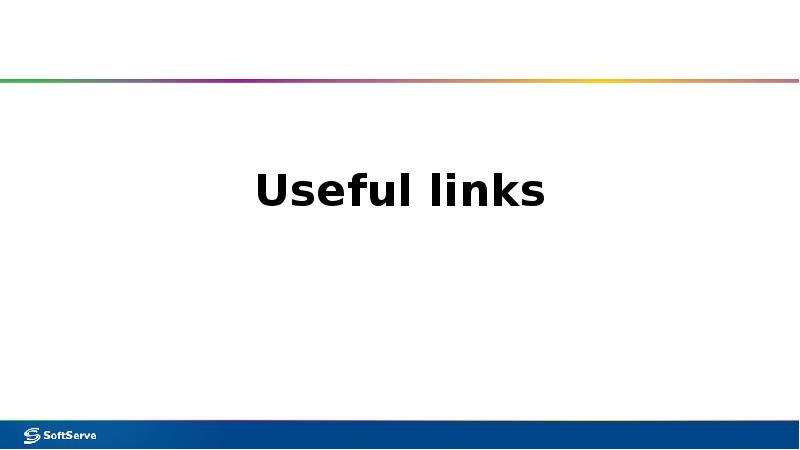
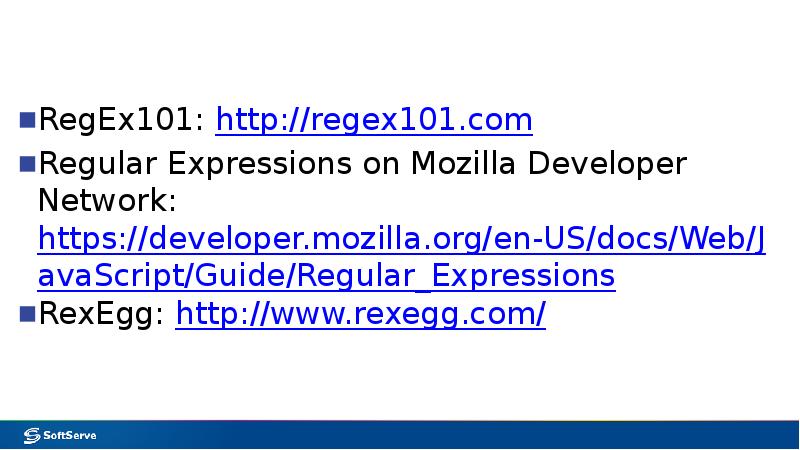
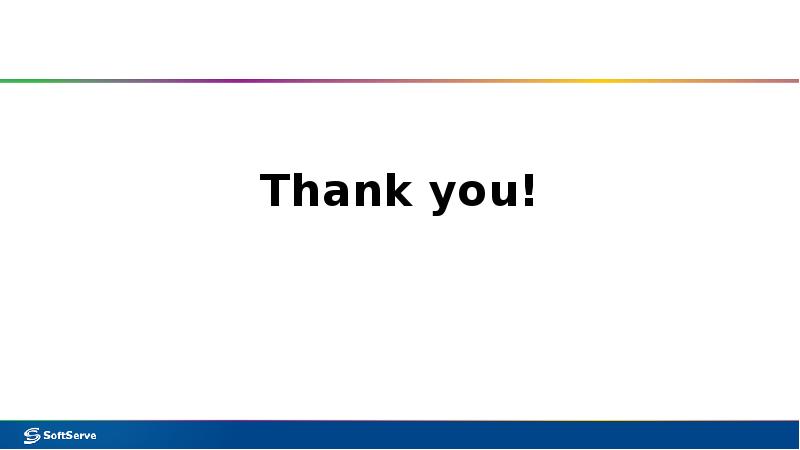
Слайды и текст этой презентации
Похожие презентации





























